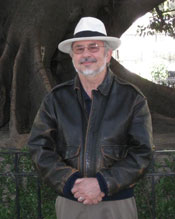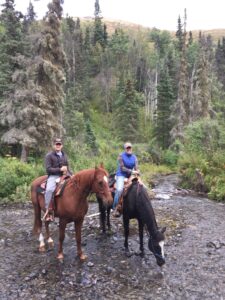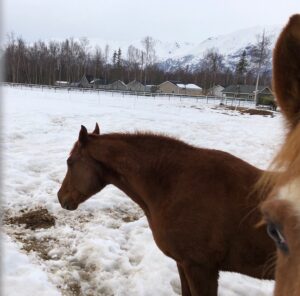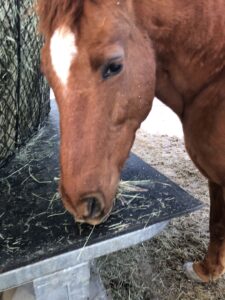

When I enter the woods, I expect something strange and interesting to happen. Watching a deer lying down for a nap, or a pair of gray foxes climbing an oak, or looking into a hollow log and seeing a large rabbit looking back, I’m surprised and delighted. My friends and I see animals as individuals with personality and character, not as prisoners of instinct. Animals seem to interpret their own situations, and perform actions in response.

This approach to animals was once considered part of science. Darwin, for one, considered animals to have a strong aesthetic sense. He brought this idea to the problem of a peacock’s tail.
How could such a handicap exemplify fitness? Darwin thought the male was proud of his tail, and driven to display. A receptive female had her own passion for his beauty.
Subsequent researchers rejected “animal emotion” and suggested that the tail merely advertised health. Male peafowl are not always selective in the choice of an audience. Darwin himself related the story of a peacock displaying in front of a pig. In his commentary, he proposed that males adore showing off for any old spectator.
In What Would Animals Say if We Asked the Right Questions?, Vinciane Despret writes:
This type of hypothesis…[disappeared]…from natural history in the years following Darwin. And when the…[paradox of the peacock]…is rediscovered from the pen of Konrad Lorenz, the founder of ethology… the display is defined…[by]…innate …energies. …The animal…instinctively…sets out in search of an object that…will trigger… stereotypical behaviors.
…with Darwin, one has an animal who is entirely the author of his escapades and who has an impression of his own beauty, with motives and intentions…On the other hand, we find a biological machine at the whim of uncontrollable laws…whose motivations can be mapped like a quasi-autonomous plumbing system.
In 1983, Mary Midgley wrote:
In what ways are people similar to other animals, and in what ways are they different? There are real problems of method about the right approach to this question…
Midgley discusses how, around 1900, “many anthropologists and biologists spoke of indigenous peoples as well as non-human animals as ‘primitive beings’ ruled by ‘instinct.’ …those discussing the matter in these terms …felt scientific ..By combining…[this theory with]…very narrow experimental methods, which made sure that no interesting behaviour would be seen, comparative psychology could thus become the study which protected the human race from serious comparison with any other species.”
Despret writes:
…the naturalists of the 19th Century show with respect to animals a generosity in their attributions of subjectivity, which has subsequently been qualified as unbridled anthropomorphism. The majority of texts by naturalists of this era abound with stories that credit animals with feelings, intentions, wills, desires, and cognitive competences. In the twentieth century, these stories are found confined to the writings and accounts of nonscientists: “amateurs,” naturalists, caregivers, trainers, breeders, hunters.
Studies of animals in the wild, where they were pursuing their own interests, were replaced by studies of captive animals in a lab, who were trying to solve puzzles designed by a human who wanted to measure their IQs.
This dreary approach has led to a kind of political correctness, such that ordinary people don’t trust their own interpretations of animals and don’t quite know whether they are allowed to speak or write of an animal’s point of view. If we are “allowed” to try to imagine the world from a stranger’s point of view, it will be because we find in their actions, body language, and the looks in their eyes, analogies to our own inner lives.
I often share animal sightings and experiences with my friend Kaylene Johnson-Sullivan. She and her husband Bill own horses, Jake being the dominant male of their herd.
I will present four photos of Jake. See what you make of his moods and emotions and gestures, then compare your impressions with those of his owners. Jake is not a wild animal, nor is he a captive in a lab. These photos depict him doing things that he wants, but also that the humans and other horses want.




Kaylene: Just watch any horse herd. There is memory at play and these animals have amazing, detailed memories. Within the herd, there are social structures and hierarchies that can be quite complex. One flick of the ear and Jake’s command for one of the other horses to move is honored immediately. If the other horse doesn’t move fast enough, Jake will punish him. He is brutal. When Jake walks through the herd, it’s like watching the parting of the Red Sea as other horses move out of his way. He’s sweet as honey around people but a total bad-ass to horses.
Photo #1: Jake is on a trail ride, peacefully doing what he is asked. His posture is relaxed, his ears are listening to his rider.
Photo #2: He’s very mildly annoyed here that I’m bothering him during breakfast. His ears are back, but not pinned. His mouth is tense.
Photo #3: I’m at the gate to let the horses out to eat. I’m pretty sure Jake is going to tell Sunny (foreground) to leave but he doesn’t. Jake just looks annoyed. He is facing away from the gate, ears back, mouth tense. It occurs to me that Jake has gotten into SO MUCH trouble with me for beating up the other horses that he’s minding his p’s and q’s. I actually think this photo is hilarious.
Photo #4: An ear pin.
Luke: Does that mean he’s angry? And does his eye show he’s checking you and thinking, “Better not bite too hard“?
Kaylene: Yes, the other horse is in his personal space and he’s saying “move it.” But he’s checking me out, too. His teeth are not bared to bite, an event that might have happened if I had not been there. I can get pretty nasty with him when he’s ugly to the other horses.
Horses are a curious blend of domesticated and wild because unless we are riding or handling them, they pretty much get to do what they want and interact as they please. Our horses are lucky. They live in a herd with space to move around and interact. A lot of horses — any at all who live in stalls — don’t have that luxury. The more you learn about horses, the more you learn what a serious hardship this is for them. They need companionship, movement, and to graze to be healthy.
These exchanges reflect our framework assumptions about animals as we go through our days, Kaylene in Alaska, myself in Rhode Island. We take the animals to be not just smart, but filled with complex emotions, social dynamics, and strong, individual characters.
What Kaylene and I have attempted in a few words is to indicate how new is this dreary proscription against ordinary speech and writing about animals, whether one is a naturalist, birder, hiker, writer, or any other sort of “amateur,” or whether one is actually an ethologist. Of course one should avoid anthropomorphism, but that doesn’t mean one shouldn’t explore analogies with human expressions of emotion and action.
“Animal behavior” is a reductivist label. I plan to pursue a richer sense of animal worlds, by paying closer attention to their expressiveness, and by further studying the works of Vinciane Despret, Mary Midgley, and also Roberto Marchesini, J.T. Ismael, and Riccardo Manzotti.

